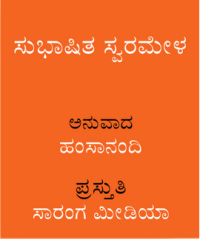Today, 9/25/2014 is the second day of Navaratri. In the post I wrote yesterday for the first day of Navaratri, I was talking about how the term Veena was a generic term to any string instrument. But now, the term refers to the species of the instrument which is sometimes called “Saraswati Veena“.
In older texts we find references to Veenas with fixed and movable frets. The north Indian Sitar, is indeed a “Veena” with movable frets. Also, the position of how the Sitar is held is typically how Veenas were played in the past. That is the reason why you see most of the sculptures of Saraswati, who is often shown as holding a Veena in the same position.
In the painting of Saraswati by Raja Ravivarma, what you see is a Saraswati Veena, which came into vogue during the early 17th century. This Veena was the handiwork of Govinda Dikshita, who was a minister at the Tanjavur court. He named the Veena after the King who ruled Tanjavur at that time (Raghunatha Veena), but the name has morphed into Saraswati Veena later on.
Today, the composition I am writing about is of the vainika-gayaka composer – Muttuswamy Dikshita.
Muttuswamy Dikshita was a strict follower of the school of Govinda Dikshita (unrelated to him though!) and composed in all ragas that were described by Venkatamakhi ( Govinda Dikshita’s son) and Muddu Venkatamakhi ( Grand nephew of Venkatamakhi) in their texts such as Chaturdandi Prakashika and Ragalakshana. In this process, he resurrected some of the previously well-known ragas that were becoming somewhat rarely performed during his time, and also created compositions for some of the new ragas that were considered “new” at his time. Ragas waxing and waning in popularity is a known phenomenon in Indian music.
But the raga of the composition I am sharing has great antiquity, and still going strong – Varaali. It has been mentioned music text more than a millenia old. Purandara Dasa also lists it as one of the popular ragas of his time. It is considered a “ghana” raga – a raga which shines with tAna playing. And take it from me – No other instrument can match a well played tAna!
Now listen to about half an hour of bliss! Maamava Meenakshi, praising the deity Meenakshi at the Madurai temple. The composition is in Raga Varali, mishra chapu tALa. The composition is played by well known Vainika from Andrhra, Veena Srinivas (www,veenasrinivas.com), and is preceded by a wonderful Alapane and tAna.
Enjoy this musical feast on the second day of Navaratri!
-neelanjana






4 comments
Comments feed for this article
ಸೆಪ್ಟೆಂಬರ್ 27, 2014 at 3:52 ಅಪರಾಹ್ನ
Nine Nights: Day 4 | ಅಲ್ಲಿದೆ ನಮ್ಮ ಮನೆ
[…] In the first three days of this Navaratri, I wrote about a music composition of Syama Sastry, Muttuswamy Dikshita and Tyagaraja, who are popularly called the Trinity of Karnataka Sangeeta and then shared with you […]
LikeLike
ಸೆಪ್ಟೆಂಬರ್ 28, 2014 at 11:28 ಅಪರಾಹ್ನ
Nine Nights: Day 5 | ಅಲ್ಲಿದೆ ನಮ್ಮ ಮನೆ
[…] not only to a name, but even the musical structure several decades before him. It is possible that Muttuswamy Dikshita was the first major composer to use this raga. There is a disputed composition of Tyagaraja in this […]
LikeLike
ಸೆಪ್ಟೆಂಬರ್ 29, 2014 at 3:16 ಅಪರಾಹ್ನ
Nine Nights: Day 6 | ಅಲ್ಲಿದೆ ನಮ್ಮ ಮನೆ
[…] how the violin was adapted to play Karnataka sangeeta by Baluswamy Dikshita, the younger brother of Muttuswamy Dikshita. And two generations later, Radhakrishnan’s grandson Jayaraman became one of the greatest […]
LikeLike
ಸೆಪ್ಟೆಂಬರ್ 30, 2014 at 12:53 ಅಪರಾಹ್ನ
Nine Nights: Day 7 | ಅಲ್ಲಿದೆ ನಮ್ಮ ಮನೆ
[…] way for later day composers to experiment with notes and come up with newer melodies. For example, Muttuswamy Dikshita composed in all the 72 mELa rAgas postulated as possible by Venkatamakhi. Tyagaraja composed in […]
LikeLike